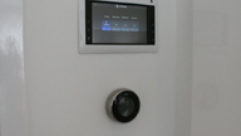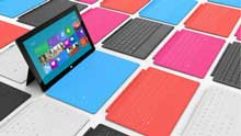
How Do You Make Your iPod Work for You in Your Connected Home?
Jan 18, 2011 1:23 PM,
By Jason Bovberg

Wadia 170 iTransport
I got an iPod touch for Christmas. I’m toying with it as if it’s a wonder of the world. I’m like a kid again. And it’s my first iPod device since I bought a second-generation 20GB iPod classic about eight years ago. For some reason, over most of those eight years, I haven’t really paid attention to the evolution of the device, and indeed the notion of digital music. To be honest, that old device became so clunky that it started gathering dust somewhere in a cabinet. Now I’m faced with a new era of music on the go. It’s a brilliant, endlessly dynamic new world of music in the palm of my hand, and what I’m finding myself most curious about is how I’ll now return that music from my palm back to the living room.
I had the same curiosity back in 2003, when digital music was a fairly young thing. My first steps into this new world were the usual—I ripped a bunch of my own CDs onto my computer. The first thing I noticed was the depressing loss in quality inherent in the 128kbps data rate. The music sounded flat and compressed; treble was tinny and obnoxious, bass was crackly and annoying. The loss in fidelity was obvious. Were my ears too sensitive? I didn’t want aurally compromised music flowing into my ears, either from headphones or from speakers, so I ended up reripping all those CDs at a more satisfying 192kbps data rate and regained a lot of that fidelity, but there were other nagging flaws of that old iPod. There was no satisfying way to adjust the levels of the music on the device, so using the otherwise fun shuffle feature became a frustrating exercise in raising and lowering the volume on one track after another. (Even the lowest-end cassette-tape decks had level controls built in.) Obviously, there was a lack of any visually exciting way to browse my music (as I could by flipping through CDs to view album art). And there was no smart, simple way to play the digitally transferred music on my home stereo system.
Most of that has changed over the past eight years. Better compression schemes have made the iPod’s 128kbps variable bit rate an attractive transfer option. (Indeed, many of the audio artifacts that purists complain about today are part of the original recordings—a fact I learned through experimentation when first listening to a rip of Amy Winehouse’s Back to Black CD, then listened to the poorly recorded CD itself. Why oh why did Super Audio CD or DVD Audio never catch on?! Sigh.) Level control is now possible in iTunes, thanks to a handy GUI level bar. And of course the latest generation of iPod devices offer the most visually enticing and useable graphical display that I’ve ever experienced.
I know Apple designed the iPod as a portable music player, but is it still too much to ask to easily translate the iPod experience to the living room, which is where I still listen to most of my music? (Sorry, but I’m just not really an earbud kind of guy.) Over the past eight years, we’ve all witnessed the increasing convergence of entertainment and computing. The computer has become increasingly important to the living room experience and even the home theater, but so far it has done so in a rather bulky, awkward way. Who wants a computer tower or even a laptop sitting heavily in the center of their living room system? My neighbor does this very thing—both upstairs in the main system and downstairs in his entertainment room. He has iTunes open at all times, the computers humming away, consuming energy, glowing monstrously in the dark. As much as I appreciate the usability of a setup like that, it’s just not appealing. I want the ability to easily slap my iPod into a permanent dock on my home stereo system, where it can charge and face out for easy accessibility.
Let me be clear: Of course there are options for realizing something close to this. I myself have an easy analog connection through an RCA cable to my AV receiver. When I want to listen to my iPod through my living room speakers, I just plug it in and switch to the aux input. Voila! And it’s fine, except that I have to awkwardly set the iPod on top of a few CD cases, with a wire hanging out—not exactly cosmetically pleasing, given the visual fireworks of the iPod itself. And it’s analog! I’d prefer a solution that would take advantage of the iPod’s inherent digital and visual dynamics. And yes, you can find high-end digital iPod docks that manage to bypass the iPod’s DACs for higher-quality output. Check out the Wadia 170 iTransport. It’s a cool unit, but will it mesh nicely with your existing system? No, it’s more of a system all to itself.
But those kinds of digital iPod docks are undoubtedly on the right track. It shouldn’t have taken eight to 10 years to get to this point, but we’re on the verge of perhaps yet another iPod revolution—when the iPod evolves from not just a portable music player blasting its audio into your ears through woefully insufficient earbuds, and not just a device that you might slap into an analog docking station with inadequate speakers, but a powerhouse that you can simply click into your high-end living room system and use its already dynamic display to access your music instantly. The iPod may have started as the next evolutionary step of the Sony Walkman, but I believe its destiny will reflect that same notion of convergence and offer the best of both worlds both at home and on the road.
Jason Bovberg is a senior editor for Windows IT Pro and SQL Server magazine and a regular contributor to Residential AV Presents Connected Home. He specializes in networking, mobile and wireless, hardware, and home computing. He has more than 15 years of experience as a writer and editor in magazine, book, and special-interest publishing. He can be reached at [email protected].










